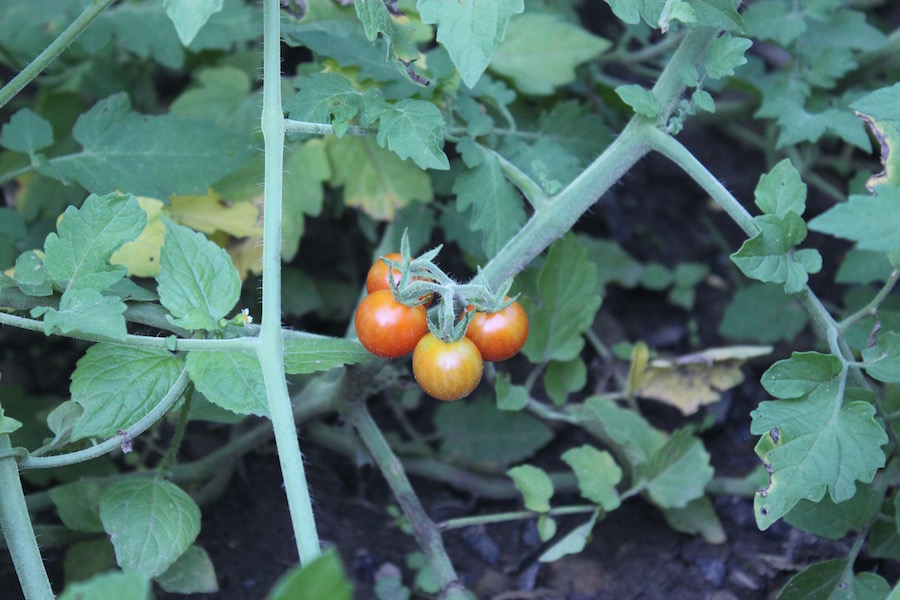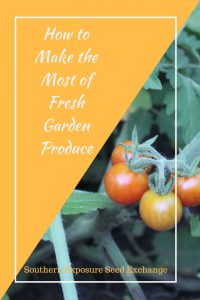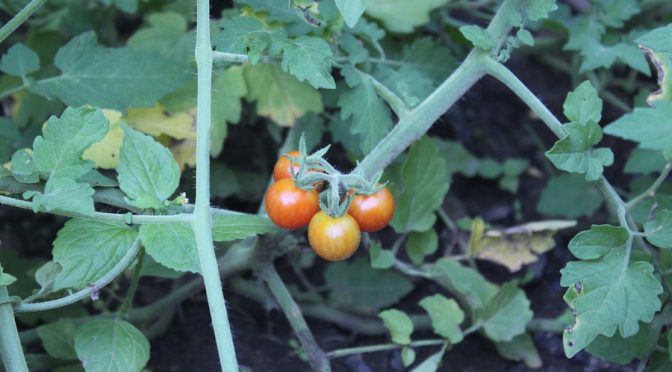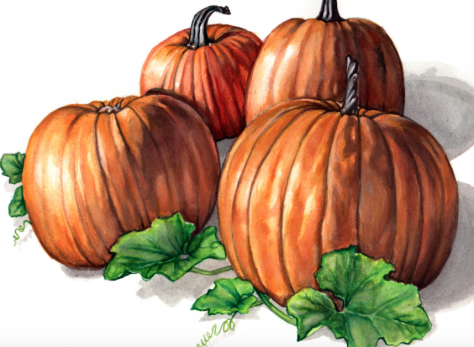If you’re anything like me it’s absolutely devastating to see any of your garden produce go to waste. When we grow our own food we’re tied to it from the moment the first seed is plunged into the soil. Unlike produce off the grocery stores shelves that seems to magically reappear, no work involved, we cannot ignore the hard work that went into our backyard produce. We become much more aware of the all the work, the sowing, weeding, watering, harvesting, that goes into each individual carrot.
On a side note perhaps if the world had more growers, more people who still had a connection to the land, we’d be less likely to waste any morsel of food no matter who grew it.
Even with all the best intentions it can be hard to use up the harvest from even a modest size garden. Chances even if you cook from scratch a lot your family has a collection of recipes that you rotate through fairly often and not all of them are going to be great for using seasonal produce. Really using the products of a garden can take a lot work. Hopefully these tips make it a bit easier.
Succession Planting
One of the best ways to avoid the produce overwhelm is to plant in successions. Check out our succession planting post to avoid getting slammed with all your vegetables at once.
Invest in a Good Cookbook

More specially, find a cookbook that actually focuses on seasonal, local eating. Typical cookbooks have a jumble ingredients from all over the world and all different seasons all smashed into a single meal. If you want to make the most of your harvest finding a cookbook that focuses on making local produce the star of the meal is the way to go.
Southern Exposure offers several books with seasonal recipes like, Winter Foods by Brett Grohsgal and Julia Shanks or Southern Provisions: The Creation and Revival of a Cuisine by David S. Shields. There are many others out there as well. Chefs like Alice Waters and José Andrés are advocating for local eating and many have cookbooks to help people put local foods back on the table.
Create a Collection of Recipes
Don’t scramble last minute. While there’s still little produce coming out of the ground collect recipes you think your family will enjoy that use seasonal produce. I like to write mine on notecards but this could be as simple as saving recipes to a file on your computer. Growing a lot of green beans? Look up some green bean recipes. When you’ve got buckets full of beans in your kitchen all you need to do is flip through your recipes for some easy meals.
Seasonal recipes can be found on the SESE blog throughout the year.
Learn to Be Flexible/Use Flexible Recipes
In our house we have several meals that make it easy to use whatever in season. Year round we eat homemade pizza almost once a week. In the spring it’s topped with fresh baby greens, green onions, and maybe even some morels if we’re lucky. A little later we’ll be topping it with broccoli, then peppers and tomatoes and fresh garlic as the season goes on. In the dead of winter we’ll use dried tomatoes, frozen greens, stored onions and garlic, and sometimes peppers we put up during the summer. Other examples of these flexible recipes include:
- Pot Pie – Take any pot pie recipe and swap in some seasonal veggies, peas in the spring, broccoli, then green beans later in the year.
- Stir fry – Whatever veggies you have on hand lightly fried with a protein source, some seasonings, and soy sauce served over a bed of rice.
- Shepard’s Pie – A layer of protein (we often use lentils), a layer of veggies (carrots, onions, peas, green beans, sweet corn, etc.) followed by a layer of gravy then a layer of potatoes.
- Minestrone – Dry beans, season vegetables, stock, and seasoning.
Having simple go to recipes that you can add a variety of vegetables is a great way to avoid cooking burn out. Always trying new recipes can be a handful but a few basic ones can save you on those hectic evenings. Shepard’s Pie, Pot Pie, Minestrone can also be made ahead of time and frozen for later use.
Try to Plan Your Meals at Least a Week in Advance

This one can be tough especially if you’re a new gardener but gardens are more predictable than you think. When I harvest our first few cherry tomatoes I know that by next week we’ll probably be flooded with them and I can select recipes ahead of time and make sure I have other ingredients that go with them on hand. This also helps save money because we’re not constantly running into the grocery store for easy last minute meals which lets be honest usually means processed unhealthy meals as well.
Preserving the Extra
No matter how much you eat fresh there will probably be extra. While some prefer to give any extra away it’s a great idea to put some up for winter. Here’s some tips to help much sure you’ll use what you put up.
- When preserving food put it up in the size containers you’ll actually use up at one time. If you live alone and cook small meals don’t pressure can your green beans in quart jars opt for pints instead to avoid waste.
- Don’t put up tons of food you’re not sure you’ll like. Want to try pickled beets? Awesome can a few pints to try and then freeze or store the rest in your root cellar. If you find you and you’re family will gladly eat a ton of them you can do more next year.
- Keep a list of all the food you have in storage. Reviewing this list before planning meals for the week is an excellent way to make sure you include them in your meals.
There’s so many benefits to growing your own food. You’ll save money, eat better, and reduce your environmental impact but you won’t reap any of these benefits if you don’t actually eat what you grow. Unless you just have a few container plants planning on eating fresh salads isn’t good enough. A single tomato plant can yell 30 pounds of tomatoes! Succession plant, find seasonal recipes, meal plan, and put up extra to make the most of your garden this year.
Pin it for later.









